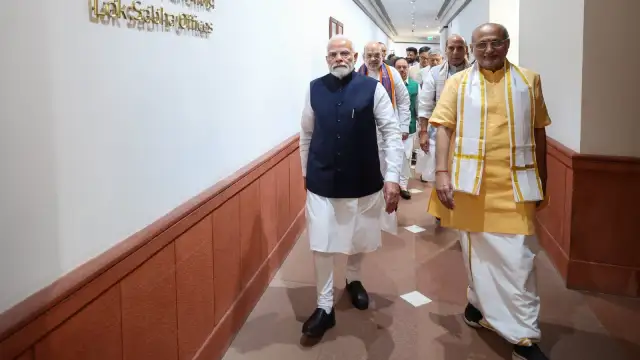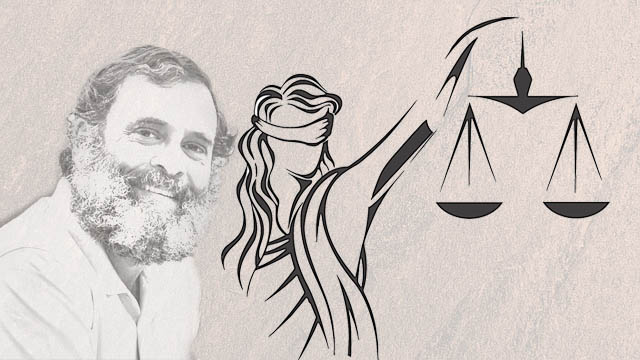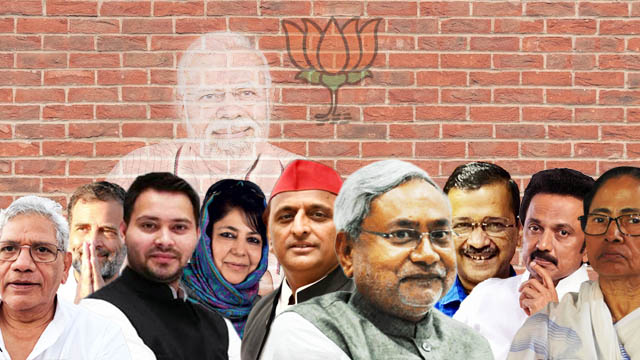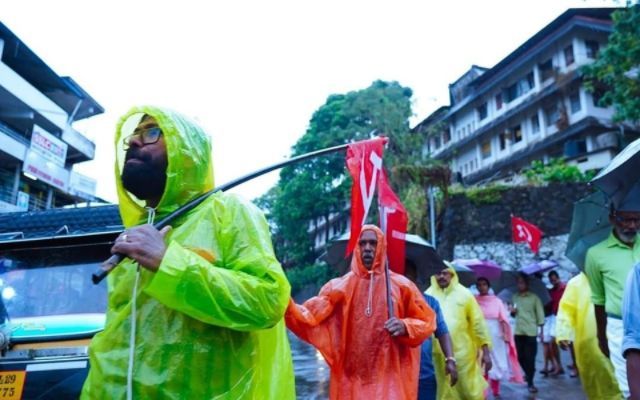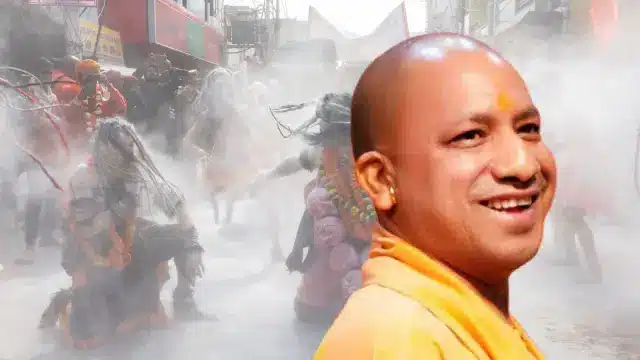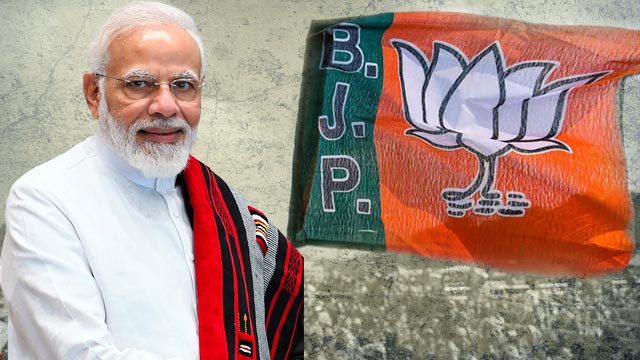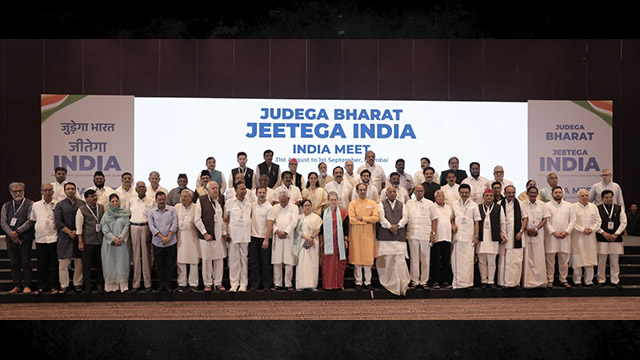When Prime Minister Narendra Modi‘s Bharatiya Janata Party (BJP)-led ruling National Democratic Alliance (NDA) coalition suddenly announced the name of Maharashtra Governor CP Radhakrishnan as its vice-presidential candidate, several eyebrows were raised.
Mr Radhakrishnan, a loyal footsoldier of the BJP’s parental body, Rashtriya Swayamsevak Sangh (RSS), is an ideal candidate for Mr Modi-led NDA to kill two birds with one stone.
Seen as a move to appease India’s southern state Tamil Nadu, where discontent against the Modi government’s forceful imposition of Hindi as the “national language” has been on the rise, especially due to the state’s ruling centre-left Dravida Munnetra Kazhagam’s (DMK) campaigns, experts also see it as a bid to strengthen the Hindutva camp’s outreach drive and securing the prime minister’s political future.
Tamil Nadu loses foothold
Tamil Nadu is one of India’s richest states, contributing the fourth-highest amount to India’s major indirect tax coffers—Goods and Services Tax (GST)—in the financial year (FY) 2024-25.
Despite having a total population of 72.15m compared to the BJP-ruled largest state, Uttar Pradesh, which has an estimated population of 246.27m, Tamil Nadu contributed Rs 1.12 trillion in GST, vis-à-vis Rs 1.05 trillion by Uttar Pradesh.
Similarly, Tamil Nadu ranks second in the country in terms of contribution to India’s national gross domestic product (GDP).
In FY 2024-25, Tamil Nadu contributed Rs 31.03 trillion to the Indian economy, second after Maharashtra, which contributed Rs 45.31 trillion.
Moreover, Tamil Nadu’s GDP has grown by 9.69% in the FY 2024-25, according to the government’s data, which far surpasses the national GDP growth rate of 6.5%.
Still, in the political landscape, the Hindi belt, or cow belt, which is a constellation of the Hindi-speaking states of northern and eastern India, is considered more important than a state like Tamil Nadu.
For example, despite contributing more to the Indian economy, Tamil Nadu has less than half the seats (39) of Uttar Pradesh (80) in the Parliament’s lower house.
Similarly, a poorly faring state like Bihar has more (40) seats than Tamil Nadu, as the Indian Parliament’s seats have been determined by constituencies based on population.
While, Tamil Nadu and other southern states like Andhra Pradesh, Karnataka, Kerala, and Telangana have managed to curb their population growth by investing heavily in human development, leading to a higher rate of literacy, especially women literacy (73.44%) compared to Uttar Pradesh (57.18%), the Hindi belt states have failed to do so.
Due to poor literacy rate and lack of social upliftment of the other backward castes (OBCs), Scheduled Castes (SCs) and Scheduled Tribes (STs), the northern Hindi belt remains a fertile ground for the RSS’s Hindutva politics, which recruits its footsoldiers from this region.
Compared to 30 out of 40 seats in Bihar, 37 out of 80 in Uttar Pradesh, and 29 out of 29 in Madhya Pradesh, the BJP-led NDA could win zero seats in Tamil Nadu and only one among Kerala’s 20 seats in the 2024 Lok Sabha elections.
Pinning its hopes on the Hindi belt, Mr Modi’s government will initiate the parliamentary seat delimitation exercise based on the forthcoming Census that will start in 2026.
This will eventually make the northern Hindi belt politically crucial in the Indian parliamentary landscape.
The South will lose seats, as well as political relevance.
A party or coalition that will manage to secure victory only in the Hindi belt states can comfortably rule India, despite losing the battle in the South.
This will turn the South politically insignificant and allow the Union government to announce policies that overlook the South’s, especially Tamil Nadu’s, interests.
Migration challenges demography
With the rise in migration of Hindi-speaking workers to Tamil Nadu and other southern states like Karnataka and Kerala, discontent has started over their attempt to impose Hindi on these States.
In recent years, Mr Modi’s government has come under fire for its attempt to make Hindi a “national language” following the Constitution’s provisions.
A 1965 mass protest by Tamils against Hindi imposition had stopped the Union’s attempt to impose it as a “national language” when there are 22 official languages and hundreds of languages in the country.
With the corresponding changes in the Indian education system, especially through the New Education Policy of 2020, the Modi government has attempted to bulldoze the States’ objections regarding Hindi imposition.
Amid the ongoing discourse over the delimitation exercise, which the government is bound to carry out per the Constitution, the Hindi issue has irked Tamil sentiments.
The issue looms as a threat to their ethnic and cultural identity.
Over the years, this has stoked confrontation between the BJP-ruled Union government and the DMK-ruled Tamil Nadu, which has been at the forefront of fighting Hindi imposition.
From Parliament to vice-presidential candidate: BJP creates optics
However, the BJP, under Mr Modi, has adopted several tactics to woo the Tamils and downplay their fear.
When Mr Modi inaugurated the new Parliament, the Sengol, a gold-plated silver sceptre from Tamil Nadu, was installed near the Lok Sabha’s speaker’s chair.
The event, in which 20 Tamil seers and other Hindu priests had performed the religious ritual of installing the Sengol, had been used extensively by Mr Modi and the BJP to create optics and woo the Tamil people.
Although it didn’t pay any dividends in the 2024 Lok Sabha elections, as the BJP won zero seats in the state, the party is now wooing the Tamils through its vice-presidential candidate, Mr Radhakrishnan.
This is done again, critics allege, to create optics for the Tamil people to show that the RSS and the BJP aren’t merely northern, Hindi political outfits but are deeply connected to Tamils as well.
This is an attempt to appease the community when its legitimate rights are coming under attack.
The Modi government’s moves aim to ensure that the Tamils neither feel isolated nor consider the RSS-led Hindutva camp as a foreign entity in Tamil Nadu.
With a vice-presidential candidate from Tamil Nadu, the saffron camp has also used the occasion to attack its foes.
Tamil Nadu state BJP president Nainar Nagenthran and Tamil Manila Congress (M) president GK Vasan have issued an appeal to the political parties in the state—primarily the DMK—to vote for the “son of the soil” in the vice-presidential election, where only members of the Parliament (MPs) can vote.
While the NDA has the majority of MPs to help Mr Radhakrishnan in the election, the appeal speaks a lot about the BJP’s attempt to create fissures within the Tamil political landscape.
Vice-presidential candidate Radhakrishnan and Modi’s bid to save job
The choice of an ardent RSS man, like Radhakrishnan, for the vice-presidential position is also a calculated move by the prime minister to woo the fountainhead of the global Hindutva movement.
During the 2024 Lok Sabha elections, the RSS didn’t reportedly mobilise the Hindutva-incensed voters to vote for the BJP, after the latter’s president, JP Nadda, had allegedly claimed that the party can do without the parental body’s support.
The lack of RSS’s support made the BJP bleed.
While Mr Modi had aimed at winning over 400 seats in the 2024 Lok Sabha Elections, the saffron party ended up winning only 240, which is even less than the absolute majority mark.
During his 79th Independence Day speech from the podium of the iconic Red Fort, Mr Modi praised the role of the RSS in “nation-building”.
The move is seen as a bid to appease the BJP’s parent body, which wants Mr Modi to follow the rules set by the saffron party to send leaders to retirement after the age of 75.
As Mr Modi reaches 75 in September, speculations are rife that the RSS leadership would ask him to walk the talk.
Earlier, in 2013-14, the BJP ensured that some of its top leaders, including co-founders like LK Advani and MM Joshi, were sidelined from the party’s top decision-making process and were relegated to being superfluous.
The party announced a rule that leaders above 75 will be a part of the organisation’s “Marg Darshak Mandal” or the guiding council.
The council, an ornamental one, is a retirement bloc for old horses.
With most senior leaders pushed into oblivion using this rule a decade ago, Mr Modi now stands at a very complex crossroads.
If he adheres to the rule, it will mean an end to his political journey, which the prime minister appears in no mood to accept.
In case he refuses to step down, Mr Modi’s actions will go down in the RSS’s history as a case where the individual triumphed over the organisation’s collective spirit.
In either case, the RSS finds that its control over the BJP and the government is not as absolute as it wants.
The BJP tries to appease the parental body by nominating one of its staunch members for the vice-presidential seat.
Mr Radhakrishnan’s candidature will not only help save Mr Modi’s job under an “exceptional” formula, but it will also help the RSS have a stronger control on Indian legislative business.
Unlike the president’s post, which is largely ornamental, the vice-president’s post has crucial powers as the incumbent will also become the chairman of the Rajya Sabha, the upper house of the Parliament, and control the flow of discussions in the house.
Jagdeep Dhankar, the former vice-president who suddenly resigned amid the ongoing monsoon session, had been accused of being highly partisan while running the house.
It’s expected that Mr Radhakrishnan, who has written a social media post acknowledging Mr Modi and other top officials soon after he was nominated, will also act in a partisan manner to repay his gratitude to the government.
Opposition politicians, including Sharad Pawar, from Maharashtra, where he served as the governor, have refused to support him, despite the BJP’s appeal. Their reason is simple—Mr Radhakrishnan has displayed an utmost partisan attitude throughout his tenure in office.
The snippet from Maharashtra indicates what Mr Radhakrishnan will offer as the chairman of the Rajya Sabha.
At a time when, after a brief hiatus following its electoral setback in 2024, the BJP has again started pushing bills that undermine the democratic rights of the people and promote authoritarianism, the Parliament must function fairly, critics say.
However, with Mr Radhakrishnan’s track record, it seems that the state of limbo will continue.
This will further restrict the Parliament’s limited scope to prevent the government from taking controversial steps and to curb attempts to formulate legislation that the Opposition believes goes against public interests.
Mr Radhakrishnan’s candidature for the vice-presidential polls has helped Mr Modi kill several birds with a single stone.
From appeasing Tamils to saving his own seat, a lot is at stake for the prime minister in the forthcoming vice-presidential polls.
Join our channels on Telegram and WhatsApp to receive geopolitical updates, videos and more.

